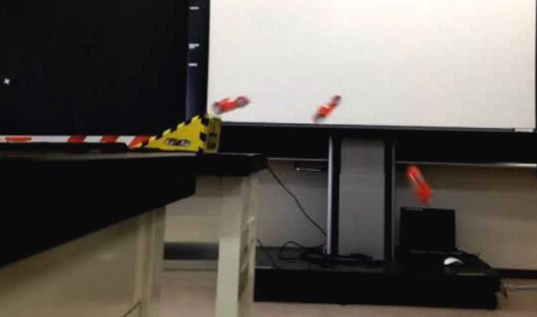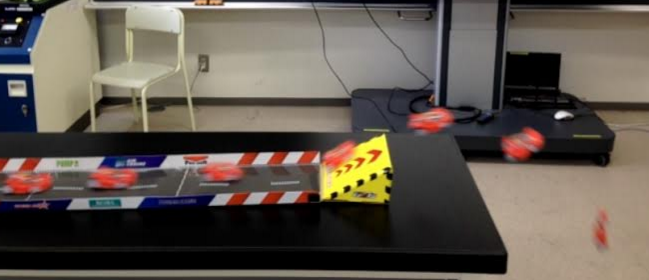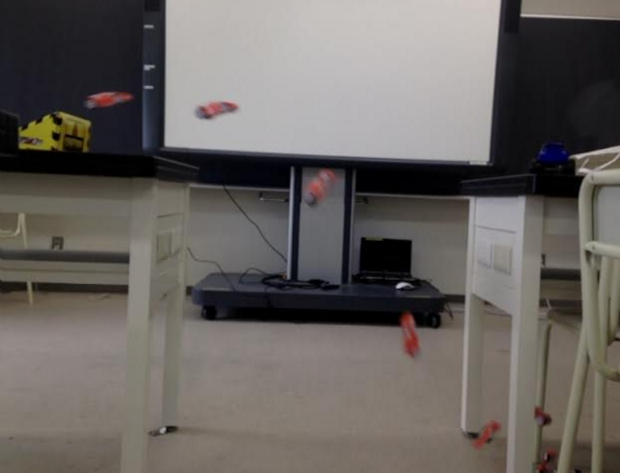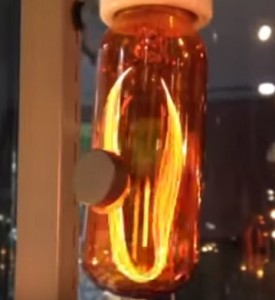The Pullback Physics Lab: Snap a Photo to See the Secrets of Projectile Motion!
I’m Ken Kuwako, your Science Trainer. Every day is an experiment.
Imagine a toy car jumping! Wouldn’t it be exciting if you could capture a beautiful trajectory of motion, straight out of a physics textbook, just by filming its flight with your smartphone? Today, I’m introducing a remarkably simple experiment using a common pullback car and a smartphone app to visualize projectile motion when an object flies!

Setting Up the Experiment is Super Easy!
You only need a few items:
A Pullback Car (that toy you pull back and release to make it race forward).
A Jump Ramp (cardboard or a small board will do).
A Strobe Photography App (like Motion Shot on iPhone or a similar app that captures continuous motion).
Snap the Shot with Your Phone! Behold “Projectile Motion”!
Let’s get right into the experiment… Here’s the picture I managed to take! It looks like the pullback car used a technique to create clones of itself! Amazing!

Here’s another shot from a different angle. This illustrates the projectile motion of a flying object. It draws a beautiful arch, doesn’t it?

What the Photo Tells Us About the Laws of Physics
So, what can we learn from this picture?
The key thing to notice is the horizontal spacing between the images of the pullback car. Look closely. You can see that the distance between each car in the photo is almost constant.
This reveals a crucial concept in physics: when an object is in flight, there are virtually no forces acting on it in the horizontal direction (we ignore air resistance for simplicity). Because there is no force, the speed of its horizontal movement does not decrease; it continues to move at the same speed (uniform linear motion). That’s why the spacing is constant when photographed at equal time intervals.
Now, what about the vertical direction? Here, the spacing is not constant. The gaps get narrower as the car goes up and wider as it passes the peak and falls down. This is evidence that the car is constantly acted upon by a downward force called gravity. Gravity acts as the brake (on the way up) and the accelerator (on the way down).
It is the combination of these two motions—constant speed in the horizontal direction and vertically-changing speed due to gravity—that creates the beautiful parabolic curve.
In the photo, perhaps because the jump ramp’s angle was shallow, the car flew in a way that closely resembles horizontal projection (where the object flies out horizontally). It’s also fun to change the angle of the ramp to observe how the trajectory changes, making the car fly higher or farther!
It’s astonishing how clearly the laws of physics can be seen using just a toy pullback car and a smartphone. I encourage you all to try visualizing motion with everyday objects!
Inquiries and Requests
Let’s make the wonders and fun of science more accessible! I’ve put together easy-to-understand tips and fun science experiments you can do at home. Feel free to browse around! ・The content of the Science Notebook has been published as a book. Find out more here ・For more about the operator, Ken Kuwako, click here ・For various requests (writing, lectures, experiment classes, experiment classes, TV supervision/appearances, etc.) click here ・Article updates are posted on X!
![]() Experiment videos are available on the Science Idea Channel!
Experiment videos are available on the Science Idea Channel!


